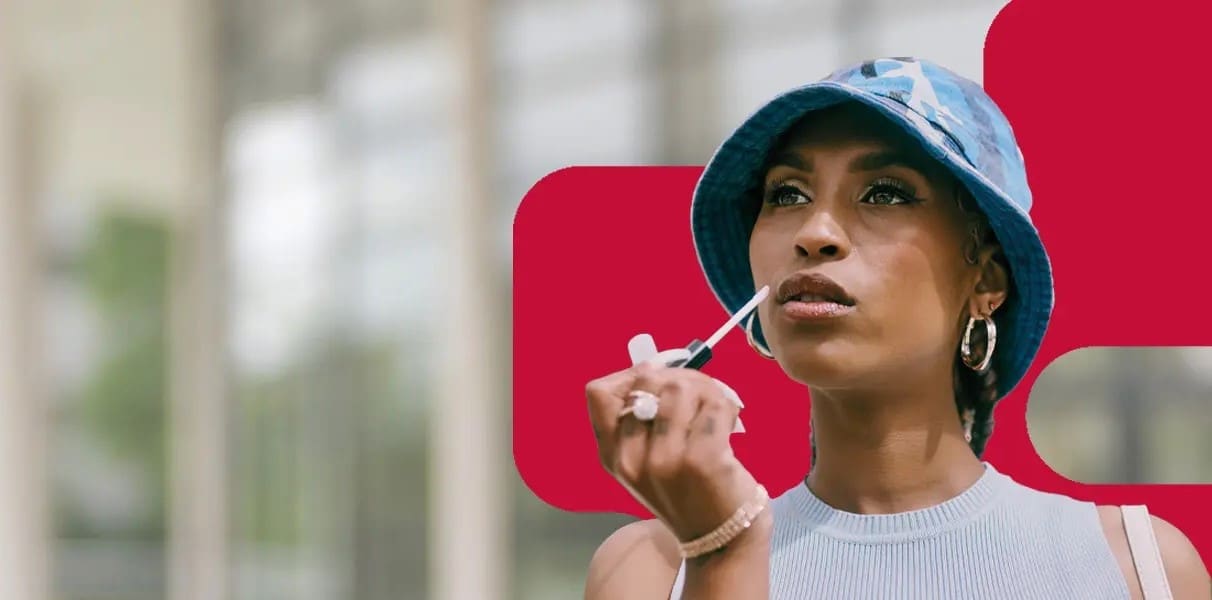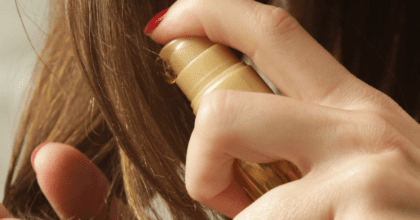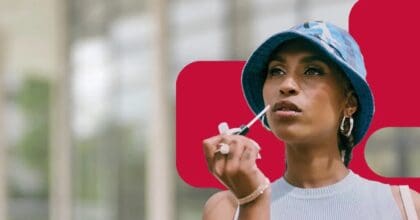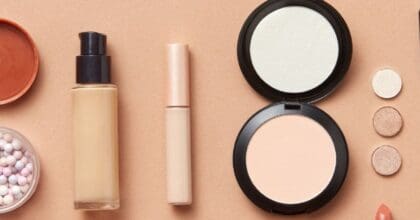Eyebrows on fleek: One quarter of US women use eyebrow pencils, while 19% wear eyebrow make-up
Recent trends in color cosmetics are leading to shifts in how US consumers are allocating their beauty spending, according to Mintel’s Color Cosmetics US 2015 report. One of the latest trends driving interest in the category is bold, groomed brows, with 25 percent of American women using eyebrow pencils and one in five women wearing eyebrow make-up on a regular basis (19 percent).
In line with the bold and defined eye trend, multi outlet (MULO) sales of eye liner have grown by 5 percent since 2014, with long-lasting results and precise application driving strong segment gains. In contrast, the facial make-up trend of “less is more” has some wearers opting for lighter-weight products, including 17 percent on US women who wear BB cream regularly.
The trend-driven nature of the color cosmetics category has historically translated to sales volatility. However, growth in the roughly $10 billion color cosmetics category has steadied, with Mintel expecting continued gains of 2-3 percent on a yearly basis through 2020.
Long-lasting forms drive interest in bold brows, defined lips and eyes and bare faces
Eyebrow cosmetics are used by a growing number of American women, with 25 percent reporting use of brow pencils and one in five women reporting use of eyebrow make-up (19 percent). Overall, eye make-up is currently the strongest performing segment, growing sales by 4.3 percent between 2013 and 2015, driven largely by the popularity of bold eyebrows which has spurred the launch of numerous brow-specific products in both the mass and prestige ends of the market. Mintel data highlights MULO sales of eyebrow cosmetics have nearly doubled since 2010.
In line with the bold and defined eye trend, MULO sales of eye liner grew 5 percent since 2014, driven by long-lasting results and precise application claims. Overall, eye make-up is widely popular, with 62 percent of women reporting regular usage. Mascara stands out as the most used eye cosmetic with nearly half of US women wearing mascara regularly (48 percent), and continues to be considered a staple for many women.
Bright and defined lips are also on trend, particularly lipstick and lip liner that focus on long-lasting results and dramatic color. Indeed, 47 percent of lip cosmetic users rank long-wearing as important, slightly less than the 48 percent who cite moisturizing or hydrating as their most sought after attribute. While the permanence of the bold lip color fad is difficult to predict, research indicates that functionality is important to lip make-up users, regardless of color and format trends. More than half (55 percent) of women report regular usage of lip make-up, with use being fairly evenly dispersed across lipstick (37 percent) and lip gloss (29 percent).
While bold brows and lips are on trend, when it comes to facial make-up, less is more with US women taking a pared down approach. Popularly referred to as the “no make-up” trend, achieving this look actually does require the use of make-up. As the largest category segment, accounting for nearly half of total sales (47 percent), women are opting for lighter-weight, skincare inspired facial make-up products to achieve the bare-faced look.
“While overall color cosmetic category growth is slow, women continue to be influenced by trends, leading to shifts in cosmetics spending. Eye make-up is currently the strongest performing segment, driven largely by the popularity of eyebrow-specific products. Historically, eyebrow products have not been a big growth area in color cosmetics, as women have often relied on hair removal items to create thinner brows. We’re now seeing a shift as consumers gravitate towards fuller brows,” said Shannon Romanowski, Category Manager, Health, Household and Beauty & Personal Care at Mintel. “Despite facial make-up accounting for the largest share of category spending, sales have been slow as women opt for a pared down, ‘barely-there’ make-up look.”
Technology helps women shop the category
While still the minority, some color cosmetic users rely on technology features such as social media, tutorials and apps to navigate the category. For example, 21 percent of the category’s core customer segment, women age 25-34, like or follow make-up brands on social media, with 17 percent often purchasing products they see promoted across social networks. When it comes to online make-up tutorials, 17 percent of 25-34 year old females follow brands on YouTube so they can learn how to create make-up looks, compared to just 9 percent overall. The use of technology is becoming more widespread in the category, as brands and retailers look to make the color cosmetics shopping experience more convenient and highly personalized, particularly as the category landscape becomes increasingly competitive.
“Technology is becoming an increasingly important way to engage color cosmetic consumers, especially when targeting the core consumer demographic, women aged 25-34. We’re seeing a reinvigoration of the category as a result of new tech-focused initiatives that personalize the shopping experience, while encouraging women to experiment with new products and formats. By identifying consumer needs and promoting trends through apps, social media and online tutorials, brands and retailers are able to deliver information to help women navigate the category, enhancing the experience,” Romanowski continued.
What do women want? “Real” beauty advertising
A strong theme that comes through in Mintel’s research is the skepticism surrounding color cosmetics advertising, specifically airbrushed/photoshopped imagery. Four in 10 US women (41 percent) think that airbrushed images in advertising deliver artificial expectations about results, making it difficult to know what a product looks like in reality. Furthermore, 26 percent of women believe that looks created for color cosmetic advertising are the result of products other than those being advertised.
While make-up brands tend to focus on glamour in advertising, Mintel research highlights an opportunity for brands to be perceived as more relatable. As a result of the skepticism surrounding advertising, make-up wearers would like to see more authenticity in advertising, including images that aren’t photoshopped (48 percent) and models that represent their age (43 percent). Despite this skepticism, advertising remains an important vehicle for delivering trends and information to shoppers. Mintel research shows that 27 percent of make-up wearers would like to know how to recreate looks they see in advertising and 20 percent often buy products they see advertised.
“Color cosmetic wearers are tired of airbrushed, unrealistic advertising from cosmetic brands. Our research shows that US women want to see more age variation and ads that feature ‘real’ women, not just celebrities. Ultimately, women are looking for imagery that delivers an accurate portrayal of how products will perform, while also providing a more attainable image of beauty,” Romanowski concluded.
Press review copies of Mintel’s Color Cosmetics US 2015 report and interviews with Health, Household and Beauty & Personal Care Category Manager Shannon Romanowski are available on request from the press office.
For the latest in consumer and industry news, top trends and market perspectives, stay tuned to Mintel News featuring commentary from Mintel’s team of global category analysts.
-
Mintel StoreGet smart fast with our exclusive market research reports, delivering the latest data, innovation, trends and strategic recommendations....View reports
-
Mintel LeapMintel Leap is a revolutionary new AI-powered platform that will transform your research process....Book a demo







































